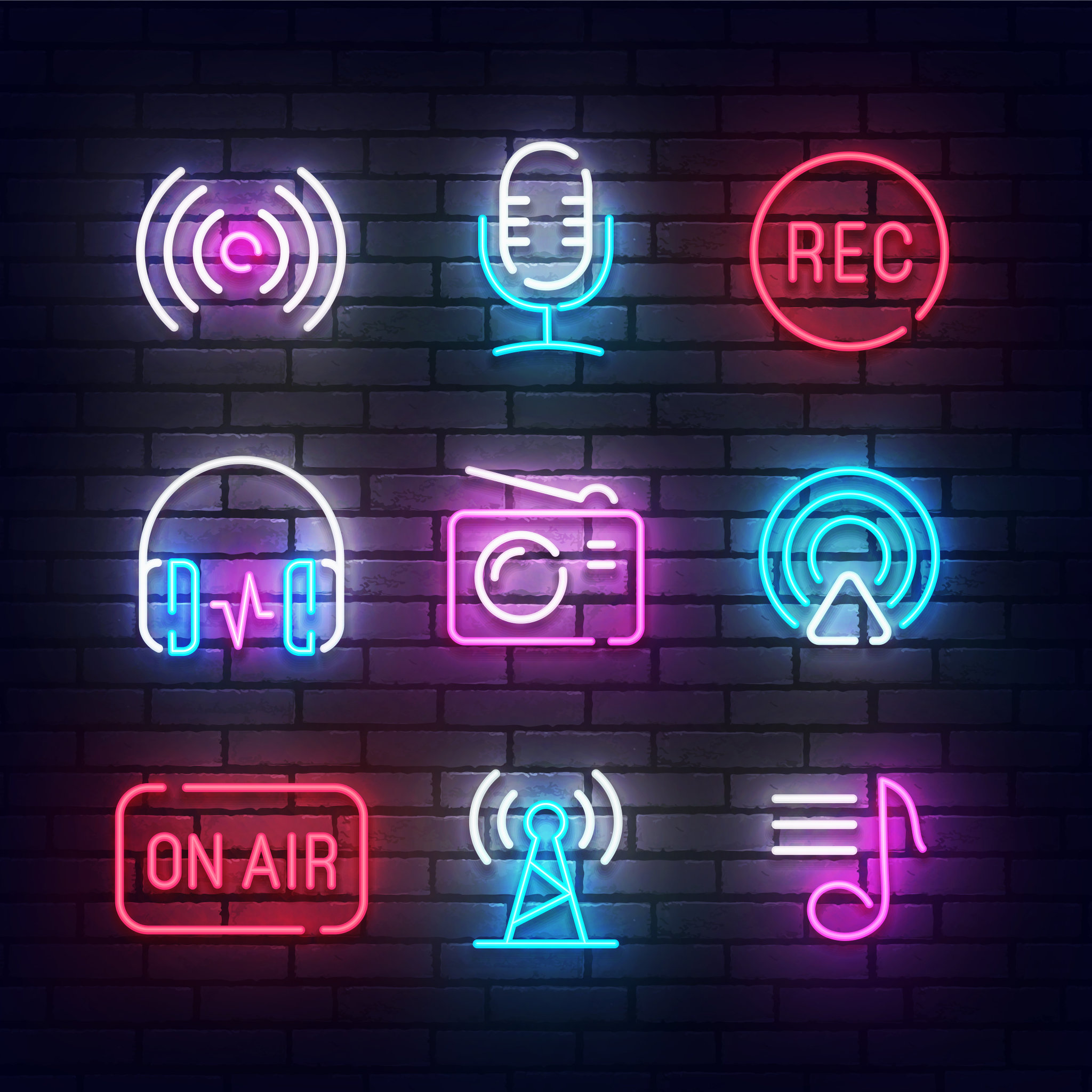How To Start A (Sex) Podcast
January 10, 2022 by Justin Lehmiller
Since launching the Sex and Psychology Podcast, I’ve received a number of queries from folks who are interested in starting their own shows. Podcasts can be a fantastic educational tool for folks in the sexuality space, but the process of starting out can be daunting. There are a LOT of things to take into account, so I’ve put together a handy guide to help you on your podcasting journey from selecting the right equipment to producing an episode to building an audience. So, here goes.
The First Question to Ask Yourself: Do I Really Have Time For This?
Running a podcast is no small amount of work. I would say that, on average, I put in about one full workday per episode I create, so it takes time and commitment! Here’s my approximate effort breakdown:
- Identifying guests and scheduling/coordinating their appearance (30 minutes)
- Preparing for the interview, including reviewing the guest’s work and coming up with questions/topics to explore (2 hours, although it can take much longer if you’re not familiar with their work and/or need to read their latest book. In my view, prep is the most important element for ensuring a worthwhile listening experience for your audience and getting the most out of your interview)
- Recording the show (1 hour, although unexpected tech and internet issues can pop up and add to the time)
- Producing and editing the show (if you’re doing it on your own, it can take several hours, which is why I ended up hiring a producer to assist with this. However, I still spend about 1 hour listening to each edited show and fine-tuning it when needed)
- Getting the show ready for distribution, including making episode artwork, writing compelling show notes, and uploading everything to my website (1.5 hours)
- Promoting the show across social media platforms with custom text, images, and clips (1.5 hours)
So even when I have a guest whose work I know well, everything goes smoothly with recording, and a producer does most of the editing, it’s still about an 8-hour day on my end just to make that 45-minute show the audience eventually hears! Granted, there are ways to cut down on this time, such as by hiring a production assistant (to coordinate guests, assist in promotion, etc.), but that can get expensive.
Of course, this is just my experience. There’s always individual variability, and the time commitment will depend on the length and format of your show, among other things. Some people will be able to make their episodes faster, whereas it might take others much longer. Either way, the first question to ask yourself is whether this is something you actually have the time for because it can be a pretty big undertaking!
Conceptualizing Your Show
If you’re ready for the commitment, the next step is designing the show. What is it going to be about? What will you call it? What’s the format? How long will your episodes be? Will you have a co-host? How will your show stand out in a crowded market?
It’s worth doing a bit of research on existing podcasts in your area to find your niche. For example, one of the things that makes my show different from most other sex podcasts is that I’m a researcher primarily interviewing other researchers. This allows the show to really dive into the science of sex as opposed to, say, focusing on personal experiences with sex (there are already a ton of shows with that approach).
Take your time with this part. Your show’s identity is crucial to its success.
Once you’ve sketched out your approach, you’ll need to design artwork for your show to crystalize its identity. Fortunately, there are a lot of ways to do this if you don’t have a background in graphic design. For example, I used 99 Designs to generate my logo and then created the cover art in Canva.
Podcasting Equipment
Next, you need to figure out how to record your show.
When I first started out, I did things on the cheap. I used a very basic USB microphone that cost $20 and recorded my interviews for free over Skype and Zoom. It worked, but the sound quality wasn’t great. With the amount of time I was putting into the show, it was important for me to have something that sounded really good and didn’t have the vocal distortions you always hear on Skype/Zoom due to compressed audio, so I explored other options.
I tried several different mics and recording platforms with mixed results before I found the winning combination for me. Here’s what I use now:
- I record all of my remote interviews through Zencastr. It’s easy to use and, in my view, produces better results than anything else out there. Zencastr records separate audio files on each end of the conversation, which results in a very crisp, clear sound. This also allows you the ability to edit out background noise that only appears on one track. Zencastr also gives you the option to record video, get a transcript for your show, and download your files in various formats, which gives you a lot of flexibility. They offer a free 2-week trial and, if you like the results, you can use my discount code to save 40% off Zencastr’s professional plan. Click here to redeem, or visit zencastr.com and use this code: sexandpsych
- I use an AT2020 mic that I absolutely love. If you can swing the price (about $130), it’s well worth it and leagues better than anything else I’ve tried.
- I coupled the mic with a desk-mounted microphone arm (about $15) to make it easier to angle my mic exactly where I want it. I also added a pop filter (about $10) to enhance sound.
- I plug these earbuds into the mic (about $40). You’ll want to use earbuds for sound instead of your computer’s external speakers so that your guest’s audio doesn’t get picked up by your mic.
So it was about $200 in one-time equipment purchases and $20/month for the recording platform. I also purchased a license for intro/outro music from Shutterstock for about $50 to add to the show (that was a one-time fee—not per episode). So, all in, total equipment costs for the show for the first year were about $500, but remember that this includes a lot of one-time purchases. These costs are all assuming you’re doing your own show editing (more on this below).
If you listen to a few minutes of my early podcasts and then compare them to more recent episodes, you’ll notice a HUGE quality difference! If you don’t have much of a budget, you can certainly get by on the cheap as I did in the very beginning, but if you want professional audio quality, you’ll need to spend some money. In my view, it’s worth it because it will help bring in listeners and keep them coming back (a lot of people will tune out if the audio is poor). A podcast is also a professional calling card—it represents you (and your brand) to the world, so make it sound as great as you can!
Great sound (and show quality, of course) will also help if you plan to bring on advertisers. And if you can start advertising on your podcast, your show can start paying for itself—and you can potentially make money on it as well. That’s another reason not to be too afraid of the upfront costs. If your show does well, you can recoup the costs and start getting paid for what you love to do. As the saying goes, “sometimes you have to spend money to make money.”
Producing an Episode
Now that you’ve recorded an episode, you need to produce it. When I first started out, I did all of my own production work with a free program on my computer (iMovie—but I’ve also used GarageBand for this). There was a bit of a learning curve and it did a decent job. It just took a ton of time.
Some of the steps involved included adding intro/outro music, editing out long pauses and word stumbles, trimming episodes that went on too long, adjusting audio levels to keep them consistent throughout, and reducing background noise. When you’re dealing with 45-50 minutes of content per show like I am, it’s easy to see how this takes hours, especially if you’re a perfectionist and don’t have a background in audio engineering.
That’s why I ultimately hired a producer to do the initial edits for me. It saves me several hours of work per episode. What does a producer cost? It ultimately depends on your budget and needs. It can cost anywhere from $25 to several hundred dollars per episode. The good news is that you don’t have to spend a lot of money to get some help. And if it can save you several hours per month, this can potentially pay for itself.
Getting Your Show Out There
So you’ve recorded and produced your first episode. How do get it out into the world? If you already have an existing website, you may be able to post it there. My site used to be hosted on Squarespace, but I later moved to WordPress. Both offer the ability to host a podcast without added cost to you. If you don’t already have a website, distributing your podcast will be something else you need to budget time and money for.
When I first started the Sex and Psychology Podcast on my Squarespace site, it was as simple as creating a new blog page and then setting it up as a podcast (here’s the guide I used). Of course, having your podcast hosted on your website alone isn’t enough. You’ll want it to be available on major podcast platforms like Apple and Spotify, which is where most people listen to podcasts.
Fortunately, it’s pretty easy to get onto those platforms. I had to individually visit each one and create some accounts for places I didn’t already have them, but you basically just need to submit the RSS link to your podcast to each platform once, and then new episodes of the show that appear on your site will automatically get pushed out to each platform.
If you don’t already have a website and/or you just want to simplify the process, you can use a podcast hosting provider like Libsyn that can do all of your hosting and distribution for a monthly subscription fee.
Promoting Your Show
In order to get listeners, you need to promote the heck out of your show. Having already run a blog for about a decade, I had a built-in audience I could promote my show to on social media, so that’s where I focus most of my promotional work.
Having short audio and/or video clips can be a great way to drum up interest. Find some short, compelling segments that you can extract. You can turn them into “audiograms” optimized for social media with an app like Headliner. Or you can use programs like iMovie to create clips for YouTube. Or pull out a quote from the show to put in a tweet or make a quote image to post on Instagram.
Great creative and try several things on different platforms to reach as many people as possible.
You can also leverage your guest’s audience by asking them to share the show and by providing them with clips and images they can use.
Beyond social media, you can also leverage your newsletter subscriber base if you have one, you can mention your show in all of your online profiles, and you can ask for your podcast to be mentioned whenever you’re a guest on another show or when you do media interviews. Raise awareness in as many ways as you can.
What Next?
I hope all of this gives you a good sense of how to get a podcast started and a realistic understanding of the effort involved. While it is a lot of work, it can also be an extremely rewarding and valuable educational tool.
In the next post, I share a few of my pro-tips for running a successful podcast.
Want to learn more about Sex and Psychology? Click here for more from the blog or here to listen to the podcast. Follow Sex and Psychology on Facebook, Twitter (@JustinLehmiller), or Reddit to receive updates. You can also follow Dr. Lehmiller on YouTube and Instagram.
Image Source: 123RF/mar1koff

Dr. Justin Lehmiller
Founder & Owner of Sex and PsychologyDr. Justin Lehmiller is a social psychologist and Research Fellow at The Kinsey Institute. He runs the Sex and Psychology blog and podcast and is author of the popular book Tell Me What You Want. Dr. Lehmiller is an award-winning educator, and a prolific researcher who has published more than 50 academic works.
Read full bio >


